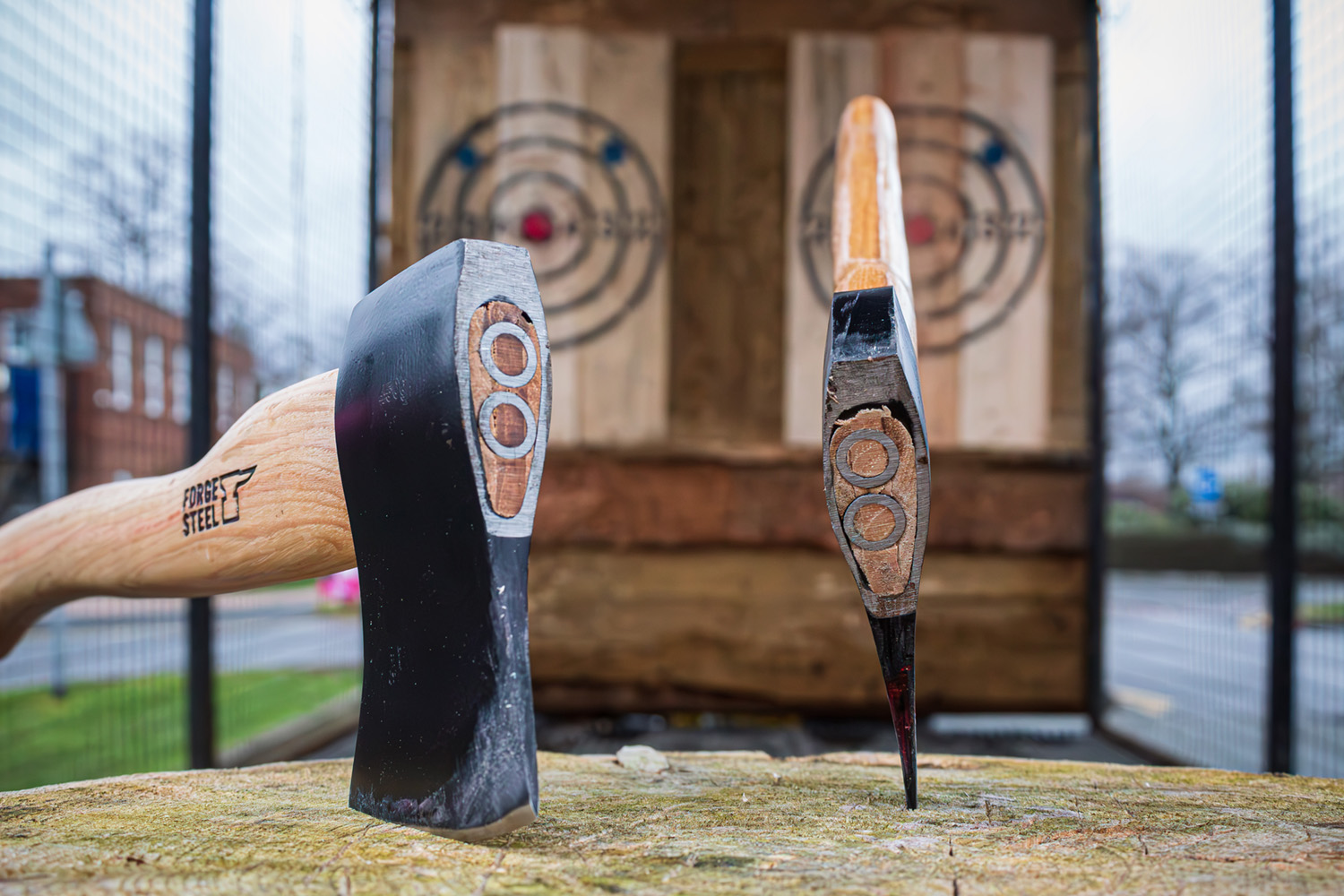Axe throwing has become a popular recreational sport in recent years, with many people looking to try their hand at this exciting activity. While it may seem simple at first, there are actually many factors to consider when choosing the right axe for your new axe throwing hobby. Here are some tips to help you find the perfect axe for your throw.
1. Weight and Balance
The weight and balance of an axe are crucial for achieving accuracy and power in your throws. The ideal weight of an axe depends on personal preference and strength, but generally, a 1-2 lb. axe is recommended for beginners, and is standard for most venues. It is also important to check the balance of the axe – the center of mass should be around the head of the axe, making it easier to control and aim.
2. Handle Material
The material of the handle can make a big difference in your throwing experience. Traditional wooden handles provide a good grip but can become slippery when wet. On the other hand, modern axes come with synthetic grips that provide a better hold and control. It is important to find a handle material that feels comfortable for you and allows for a strong grip while throwing.
1. Weight and Balance
The weight and balance of an axe are crucial for achieving accuracy and power in your throws. The ideal weight of an axe depends on personal preference and strength, but generally, a 1-2 lb. axe is recommended for beginners, and is standard for most venues. It is also important to check the balance of the axe – the center of mass should be around the head of the axe, making it easier to control and aim.
2. Handle Material
The material of the handle can make a big difference in your throwing experience. Traditional wooden handles provide a good grip but can become slippery when wet. On the other hand, modern axes come with synthetic grips that provide a better hold and control. It is important to find a handle material that feels comfortable for you and allows for a strong grip while throwing.

3. Length of the Axe
The length of an axe can impact the trajectory of your throws. A shorter axe will travel in a straighter path, while a longer axe will have a more upward trajectory. Experiment with different lengths to see which one works best for you and your throwing style.
4. Shape of the Blade
The shape of the blade can also affect your throws. A wider blade will have a larger surface area, making it easier to hit the target. However, a narrower blade can provide better penetration into the target. For beginners, a wider blade is usually recommended as it allows for a larger margin of error.
5. Type of Axe
There are many types of axes available, but there are a few specifically designed for axe throwing. These throwing axes are typically lighter and have a more balanced design, making them easier to throw accurately. If you are serious about axe throwing, investing in a throwing axe may be a good option.
6. Personal Comfort
Ultimately, the most important factor in choosing the right axe is your personal comfort. Handle different types of axes and see which one feels the most natural and comfortable for you. A comfortable axe will allow you to focus on your throwing.
The length of an axe can impact the trajectory of your throws. A shorter axe will travel in a straighter path, while a longer axe will have a more upward trajectory. Experiment with different lengths to see which one works best for you and your throwing style.
4. Shape of the Blade
The shape of the blade can also affect your throws. A wider blade will have a larger surface area, making it easier to hit the target. However, a narrower blade can provide better penetration into the target. For beginners, a wider blade is usually recommended as it allows for a larger margin of error.
5. Type of Axe
There are many types of axes available, but there are a few specifically designed for axe throwing. These throwing axes are typically lighter and have a more balanced design, making them easier to throw accurately. If you are serious about axe throwing, investing in a throwing axe may be a good option.
6. Personal Comfort
Ultimately, the most important factor in choosing the right axe is your personal comfort. Handle different types of axes and see which one feels the most natural and comfortable for you. A comfortable axe will allow you to focus on your throwing.




